Modifications for the VAG 2.0 TDi EA188
"Tuning the EA188 2.0 TDi: A Complete Upgrade Guide."
In writing this, I drew on my own experience with Audi A3s equipped with the 2.0 TDi EA188 motor (BKD). I'll explore on tuning tweaks and engine improvements for this engine. It made its way into many more vehicles and is now one of the most popular diesel engines on the market.
There are many mods, but only a few are worth doing in my opinion, so I'll talk you through my mods and flag up the best mods here.
Also there are several 2.0 TDI tuning tweaks are available, but I discovered a catch or issue with many of them, so I'll highlight these possible dangers or pitfalls as we go through the alternatives.
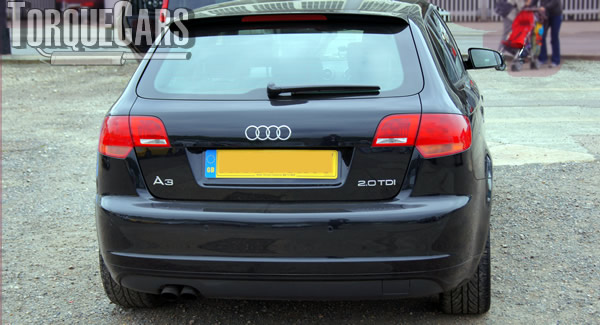
The 2.0 EA188 diesel engines from the VAG group are highly popular and have been upgraded and modified multiple times over the years. In our more general 2.0 TDI article, we will try to classify the engines, differences and tuning modifications, engine codes, flaws, and issues with them.
This video covers 2.0TDi Tuning Mods in a fair bit of detail.
Engine specs: EA188 PD 2.0 TDI (140hp - 170hp) (R4 TDi)
Engines manufactured before to 2008 are based on the PD EA 188 (Pumpe Düse) and are denoted with the EA188 designation.
PD used a cam driven fuel pump for each cylinder, it was simple and effective but not as flexible as the later CR fuel system, especially when meeting Euro Emissions standards.
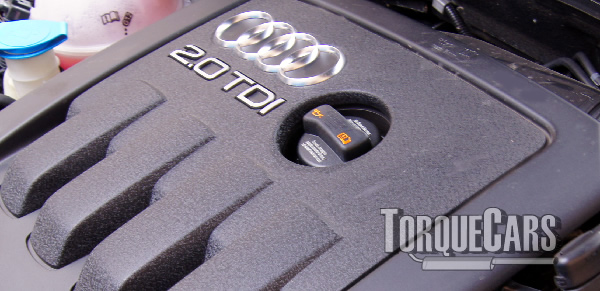
These are also closely connected to the BKP (which is most often seen in the Passat) or BMM, BMN, BMR, and BRD engine codes. There are very few differences between these engines, so what works on one will work on another. My EA188 proves to be pretty reliable even after a remap.
The 140hp EA188 can be easily mapped to around 170/180 and, in my opinion, are preferable than a conventional 170hp in terms of low end pull, but the 170s allow for greater power upgrades and hence give a better starting point, as well as avoiding the unpleasant DPF filter difficulties.
Changes to the 2.0 TDI EA188 Revisions
There are few key differences between the 140hp and 170hp 2.0TDi engines. The main distinctions are the turbocharger and injectors. EA188 140 horsepower models generally used the Bosch ECU without a DPF filter wheras many of the 170 had the DPF and used a siemens ECU.
EA188 PD (R4 TDi)
The pre 2008 engines are Pumpe Düse (PD), all are EA 188 based and given engine codes BKD, BKP (Mainly in the Passat) or BMM, BMN, BRD and BMRengine code. My BKD proved quite reliable even after a remap.
Audi A6 was fitted with the BVG BNA BRF BLB BRE & A4 BVF(120) BVG (121) BNA(136) BRF (136) BLB BRE (all Bosch 140 without DPF).
- BKD 140 bhp without DPF filter Bosch
- AZV 134 bhp without DPF filter Bosch
- BMM 140 bhp with a DPF filter Bosch injectors.
- BKP 140 bhp without DPF filter Siemens VDO Piezo injectors
- BMA 136ps without DPF Siemens VDO Piezo injectors
- BVE 122ps without DPF Siemens VDO Piezo injectors
- BWV 120ps without DPF Siemens VDO Piezo injectors
- BMN 170 bhp - bigger turbo Siemens VDO Piezo Injector engines + DPF
- BUZ 163ps - bigger turbo and Siemens VDO Piezo Injector engines + DPF
- BVA 163ps - bigger turbo Siemens VDO Piezo Injector engines +DPF
- BMR 170 bhp - bigger turbo Siemens VDO Piezo Injector engines + DPF
- BRD 170 bhp - bigger turbo Siemens VDO Piezo Injector engines + DPF
Indeed, a 140 engine can be tuned/remapped to create 170bhp (which, in our opinion, is a better alternative than buying a 170!) Nonetheless, the 140's turbocharger has a maximum output of 170-180.
If you kept the standard 140 injectors but built a larger turbo, you should be able to produce about 200-220bhp before expanding the injectors.
Although the 110 engines are often outfitted with small turbos, low-pressure injectors, and a low-quality fuel pump, the components installed vary greatly by model year and manufacturer, so double-check them before planning any change.
The Best Engine Modifications for a 2.0 TDi EA188
- Upgrading the turbo (hybrids or large turbo mods)
- Upgrades to your fuel system depending on power gains
- Performance Camshaft Mods
- Intercoolers
- Differentials
- Tune & Remapping a 2.0TDi ECU.
Avoid EGR removal modifications, and single mass flywheels are also problematic on these engines.
Check out our new video on diesel tuning if you're seeking for a quick introduction to tuning diesel engines. We will release a more extensive video for the 2.0TDi in the future, so please subscribe to our channel so you don't miss it!
Turbocharger Mods
TorqueCars recommends the GTB2056VK to push a 140 horsepower engine over 170 bhp. It is less sluggish than the GTB2260VK because to its smaller compressors, but it can still flow to about 260-275 bhp.
The following turbocharger improvements are available in kit form for EA188 engines, but do your homework as some are meant to provide greater top end power numbers but suffer from latency, while others provide a reasonable low to mid range boost.
- GTB2260VK
- GTB2056VK
- GTB1756VK
- GTD2872VRK
Used turbos from the 170bhp engine are a great, economical, and doable upgrade option if you're looking for 200bhp.
You may make the turbo spool up quicker by changing the form of the exhaust side impeller, resulting in a broader power band or greater top end power.
It is sometimes a tradeoff since you will not be able to have all of these advantages and will need to choose the finest solution for your situation.
Changes in the profile of the intake compressor may also have a substantial impact on the volume of air that can be driven into the engine.
Large turbos often have severe low-end latency. Smaller turbos start faster, but they cannot create as much power at high RPMs.
An option is to use a hybrid turbo. A hybrid turbo is a straight replacement for the OEM turbo, but with internals that are adjusted to your individual power needs.
Fortunately, the turbo range is always growing, and we often see variable vane turbos, which change vane shape in reaction to speed to remove lag and improve top end performance.
Twin scroll turbos split the exhaust gases into two channels and direct them to the differently slanted vanes of the turbocharger. They also improve the engine's scavenging capabilities.
EA188 Tuning Results: Quarter Mile Run times
We're assuming a kerb weight of 1400kgs with a manual gearbox so ballast is used. We are basing this on a 1400kgs kerb weight, & Manual transmission
| Base power | Quarter Mile |
Tuned to |
Kerb Weight |
Quarter Mile |
| 109hp | 18.59 | 140hp | 1400kg | 17.51 |
| 140hp | 17.15 | 175hp | 1400kg | 15.96 |
| 150hp | 16.77 | 225hp | 1400kg | 14.71 |
| 170hp | 16.10 | 255hp | 1400kg | 14.13 |
| 640hp | 1400kg | 10.98 |
With fresh maps, turbos, fuelling tweaks, and forged internals, considerable improvements on the 2.0TDi tuning project are possible. Keep in mind that 225hp would cause traction issues in FWD cars, thus 4WD versions would properly spread the power.
Quarter-mile times of fewer than ten seconds are possible, but unrealistic for the 2.0 TDi, which needs roughly 640hp to take a 1400kg car down the drag strip in less than eleven seconds.
Improvements to the 2.0 TDi's fuel system
When the torque is raised, the fuel system must be monitored as it will often top out and you'll lose power.
Additional power from your engine necessitates more diesel, which must be combined to a certain extent with the airflow. It is crucial to over-define your injector flow rate and allow for some wiggle room.
When purchasing an injector, it is best to add an extra 20% to allow for injector degradation and to offer some extra capacity in case the engine demands more fuel.
Performance Camshaft Mods
Because in the OEM engines the cams are supplied (mostly) with vernier pulleys, adjusting the cam timing on the majority of these engines is rather straightforward. The peak power zone of the car may be altered by slightly advancing or retarding the camshaft.
Only do this if you are confident in your skills. If you adjust it too much, the car may not start when cold, so back off a little from the ideal setting.
The cam cover's top easily unclips, showing the cam pulleys. ALWAYS MARK THE ORIGINAL POSITION CAREFULLY SO THAT YOU CAN RESTORE IT IF YOU ARE NOT SATISFIED WITH THE RESULTS.
You may tailor the power band within the 2.0 TDi RPM range to your preferred driving style by advancing or retarding the camshaft.
Because Bosch ECUs are very protective of the engine, mistakes in cam timing selection seldom have a significant impact beyond the engine not running.
There are various good camshaft upgrades available nowadays; the main aim of installing them is to relocate the power band to where you want it; for example, with a remap, you may want less bottom end to compensate for more top end power.
The longer valve durations may result in more horsepower over the bulk of the rpm range.
As an alternative to a fast road cam, you could simply use the vernier pulley to adjust the cam and valve timing, shifting the power band up or down, although TorqueCars suggests only minor changes to the cam positions.
MAF (Mass Airflow Sensor)
When huge volumes of air are sucked into the engine, as is the case with large power increases, the 2.0 TDi's air flow sensor (MAF) becomes constrained.
We saw considerable power improvements using 4 bar air sensors as compared to the OEM air sensor, which drained performance at a much lower level.
TDi Exhaust system upgrades
Only replace your exhaust system if the present exhaust is producing a flow restriction. The original exhaust system that comes standard on all VAG group 2.0TDi cars is more than enough!
The sound of a sports exhaust on the 2.0TDi is not a thing of beauty if I'm honest, it seemed to make the car sound more like a tractor, but often the sound is down to the design of the exhaust resonators. Please don't expect a sporty sound from any exhaust on these EA188 engines.
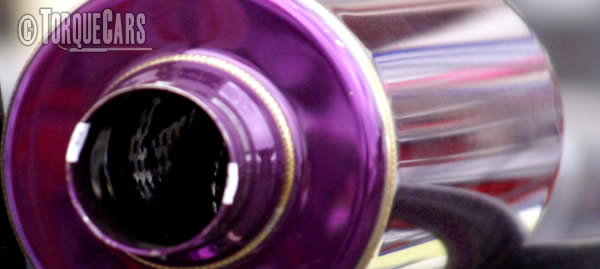
As a consequence, there is no need to replace the exhaust, and the sound created by a modified TDi is unpleasant (in my opinion).
Even with mild power increases, the flow rate on the majority of factory exhausts stays acceptable; however, if you begin pushing the power levels, you will need to acquire a stronger flowing exhaust.
However, if your exhaust pipe has a diameter more than 2.5 inches, you will lose a considerable amount of the flow rate, resulting in a loss of power and torque.
The typical exhaust limits may be due to the filters employed (cats and dpfs), thus installing a more free-flowing sports alternative may assist in avoiding this restriction. In most nations, it is prohibited to completely remove them off your vehicle, and in certain locations, it is illegal to modify them for a sporty look.
Upgrading the EA188 intercooler
We recommend improving the intercooler; the stock one is rather small and suffers from heat absorption over lengthy durations of high rpm operation. It is also (often) installed under the wheel well, and an FMIC is significantly more effective and allows for a bigger size.
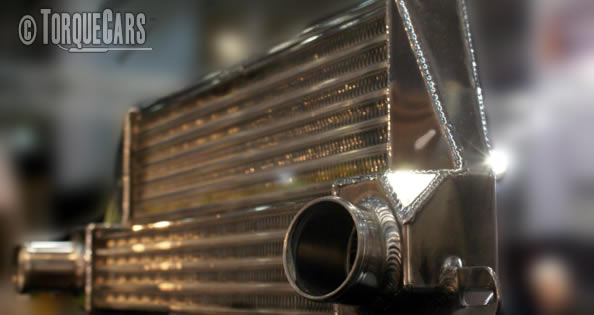
Turbochargers have issues because the cold intake charge is near to the high exhaust temperatures within the turbo, and air compression adds a substantial amount of heat, resulting in a lot of extra heat in the intake charge.
It is often assumed that cooler air contains more oxygen. So, what is the benefit of cooler air? It transports more oxygen (it is more dense).
The greater the availability of oxygen, the more diesel that can be consumed, increasing the power output of the 2.0 TDI EA188 engine.
What exactly is the function of an intercooler?
Intercoolers are radiators that keep the intake air charge cold before it enters the 2.0 TDi engine. Install an intercooler in front of the radiator to take advantage of the cold air.
The bulk of the heat is supplied after the air intake filter and before the turbocharger or supercharger.
Front-mounted intercoolers are situated in front of the radiator and provide better air cooling than top-mounted intercoolers or those installed to one side, usually in a wheel well!
A well-designed intercooler may provide between 5% and 10% more power and can withstand heat soak for a long amount of time! The benefits are larger if you've made additional improvements, since the quantity of heat it must cope with will be much greater.
All turbocharged engines, even diesels like the 2.0TDi, benefit from intercoolers, and stock intercoolers may be enhanced by moving or replacing them with those from the vehicle's S or RS trim levels.
Differential Mods
Not technically an engine upgrade, but after power hits about 190hp, traction and handling issues arise, and TorqueCars suggests changing the differential at this point.
As a result, the best design is to distribute power such that no wheel gets more than 75% of the available power at any one moment. Torque-detecting differentials come into play here.
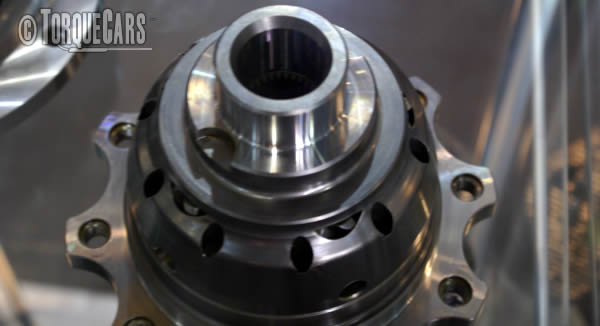
The semi-locking diff, which locks only when a wheel spins, sends power to both wheels and provides much enhanced grip in wet bends, is an example of clever diff installation.
Torque actuated differentials (which require a clutch) and torsion differentials are the two most common kinds of differentials.
Is it possible for a change to create a major difference? When you are pushing the boundaries of your power in a competitive setting, this may make a major difference in your lap timings.
A 120bhp automobile may produce better times than a 170bhp one. The automobile will pull better and be more predictable and stable in corners.
Furthermore, new diffs may change the amount of power transmitted to the rear wheels, resulting in improved handling and traction.
Should you Delete The 2.0 TDi's EGR System.
The removal of the EGR has no obvious impact on performance. It does not open at full throttle (WOT), which improves fuel economy and throttle response at low RPMs while also reducing the effort needed by the engine to overcome cylinder vacuum.
It may cause the engine to run unevenly and has been blamed for carbon build-up in the 2.0 head. But as long as you use a high-quality diesel fuel and regularly add a cleaner (such as BG244), you should be OK.
The EA188 2.0 TDi Engine has power limitations.
For the majority of drivers looking for a daily car, 250bhp is a realistic upper limit.
The engines are quite strong, with a safe maximum power output for a standard block of about 350 horsepower; however, a lot depends on driving style and maintenance.
Power distribution and traction may be a concern with more than 220bhp, therefore it's worth investing in a good LSD and sports tyres.
You'll need to increase the injectors to about 250bhp, however this can vary depending on the injectors that came standard with your car.
The majority of drivers report that the clutch begins to slip about 420-430Nm, and the DSG gearbox has a torque limitation, so keep this in mind and upgrade before it becomes an issue.
Is a solid flywheel OK for the 2.0 TDI?
Solid flywheels are not a good option for the 2.0TDi; it requires a DMF to smooth out the irregularities.
Individuals who have fitted lighter solid flywheels often come to regret their choice.
See our guide on DMF versus solid flywheel conversions for more details.
Problems with the 2.0 TDI EA188
We've relocated this to a new page to enable us to go into further detail about these issues since this page was growing too long. As a consequence, please read our article about 2.0 TDI problems.
All modern engines have flaws; by emphasizing these, we want to inform our readers to assist them in identifying potential issues early on and preventing them before they happen.
We are not implying that these engines are particularly unreliable or bothersome - I just acquired one (an EA188 BKD) after careful research and was pleased with it. It's worth mentioning that most contemporary engines have had the issues addressed, and many early ones have subsequently been repaired.
There have been several reports and claims of a constantly failing fan controller that stops the fan from switching off, eventually exhausting the battery and perhaps ruining the fan.
VAG sought to solve these issues by substituting gears for the chain, which seems to be a feasible alternative. They also expanded the size of the hexagon to make it stronger, which it is; but, it is currently decaying because to increasing mileage. This is still a hotly debated issue that must be addressed.
Oil flow issues might cause the oil pump to be oversized! This is usually due to the use of low-quality oil. When an engine breaks, the oil pressure drops immediately, rendering the engine unrepairable. Immediately after the engine seizes, a dash warning light may activate! Which isn't really helpful.
The cylinder head fractured a lot on early EA188 units. Behind the gasoline lines to the right of the cylinder head is a reference number 03G 103 351 B or 03G 103 308 B. Examine the letter at the end of this series carefully.
If you have an A, you will very probably have a fractured cylinder head. Although the B is somewhat stronger, a few them have cracked, so it is not a sure thing. C is the best option since there have been very few, if any, reports of broken cylinder heads.
The 2.0-liter engines have a rough idle that you must typically endure. However, a faulty DMF, injector failures, or EGR flow rate issues may result in an extremely lumpy idle or misfire.
On the majority of longitudinal PD engines, the balancing shaft module is standard. These engines have two problems: a broken chain tensioner, which disables the balance shaft module, including the oil pump, and a faulty fuel pump. The second problem is with the module itself, especially how it runs the oil pump; this is done through a little hexagon that also wears out.
Keep a close eye on engines with A or B codes, particularly if any issues or concerns arise.
Results on an EA188 2.0TDi After Tuning/Remapping.
A tune/remap modifies the engine's computer settings to increase power. Its most basic aim is it push things closer to the engine's "safety" limit.
This means it will typically forces more fuel/air into the engine, and modifies the turbo spool up speeds to maximise power improvements.
Increasing fuel duration and the start of the injection cycle are the typical aims when tuning a 2.0 TDi., but optimizing the turbo wastegate will improve response and power throughout the RPM range.
Many tuners will increase the fuel rail pressure and injector timing to improve mid-range power and acceleration while keeping the original peak pressure restrictions. If not done correctly, there will be a lot of smoke!
When it comes to fueling, they change the injection time, which is critical in diesel engines. Every common rail system includes two injection phases: a pilot phase that starts the fire and a main phase that provides the bulk of the power. During the pilot phase, the unmistakable rattling and banging of the DI diesel is reduced.
While early PD engines react well to remapping, CR engines provide substantially more control and often deliver greater mid- to top-end power.
Engine tunes or remaps for the 2.0 TDI engines:
The 140 can be boosted to 170 with a software update alone, but anything beyond that would need a turbo study. A tuned/remapped 140 is less slow and more nimble than a 170 because to the smaller turbo, however turbos may fail if not properly serviced and maintained when pushed this hard.
It goes without saying that headline power statistics are only half the storey; you must also assess the engine's overall feel and torque range.
One map I tried on my vehicle caused so much wheelspin below 1700rpm that it was difficult to drive, so I landed on a more flat torque band that offered a great pickup, enhanced power over the rev range, and allowed me to explore the top ends of the RPM band more thoroughly.
The 140 bhp EA188 engines may easily achieve 225-260 horsepower with a tune/remap and turbo boost. Again, surpassing this limit will need a significant turbo upgrade or hybrid turbo. Remember that larger turbos are often laggier, resulting in less low-end torque. This should not be an issue if you select the right turbo upgrade.
BEWARE: Exceeding 180hp on a standard turbo can significantly decrease its life. These turbos will begin to siren, whine, and smoke before finally giving up on you.
In the early part of the twenty-first century (say, the first five to six years), diesel engines got major R&D funding, whilst petrol engines made minimal development.
Since their beginnings, diesel engines have come a long way; they are now cleaner than gasoline engines, produce more power, and have greater fuel economy.
Ignore assertions claims and headline power figures of engine tuning/remapping companies.
Please overlook the headline peak power when comparing maps, since some tuners are known to build a power blip or spike to draw attention and end up providing a peaky lumpy power band.
Instead, focus on the total torque curve. More power at the bottom overwhelms the turbo and causes traction problems, while more power at the top overwhelms the turbo and its components.
Consider the dyno graph below to determine which map is ideal for you.
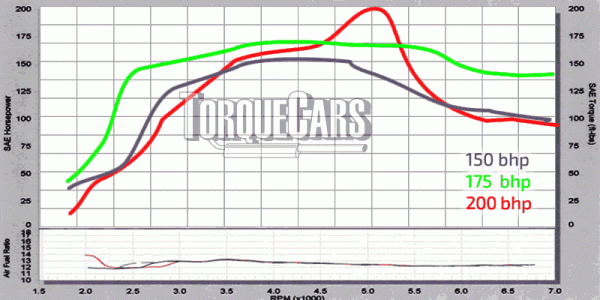
The red plot shows an increase in power, with a headline figure of 200hp, but a loss in power over the RPM range, while the green trace shows a consistent gain in power across the RPM range.
Furthermore, it displays peak power at 4000rpm, which is ideal for an engine that redlines at 7000rpm, guaranteeing that excess power is delivered properly where it is most required.
We want to see a good smooth torque build with minimal dips and troughs over the rpm range on a graph. You have to question whether the map has ever been tested or analysed given the absence of dyno reports.
The TDi tuning box performs well on these engines and is a simple plug-in-and-go configuration that can be completed in a matter of minutes.
These, in my opinion, work best on diesels and are a decent compromise between a bespoke map, which may annoy your dealer, and something you can add and delete at any time.
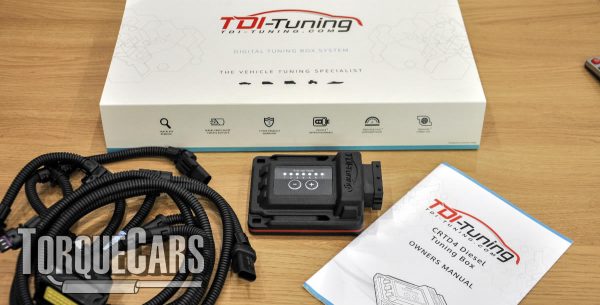
PLEASE HELP US COMPLETE THIS PAGE. If we've missed any information or you have any recommendations to provide, please let us know in the comments area below.
To learn more about tuning your automobile, please join our friendly forum, where you may debate choices in more depth with our owners. Additionally, it is worthwhile to read our impartial VW, SEAT, Skoda Audi tuning articles to have a thorough understanding of the pros and cons of each adjustment.
Kindly assist us in improving these recommendations by providing feedback in the comments section below.
We're always interested in hearing about what our visitors are up to and which modifications work best for them on whatever kind of vehicle. We use your comments and feedback to enhance the accuracy of these constantly updated articles
Please Check out my YouTube channel, we're regularly adding new content...
PLEASE HELP: I NEED YOUR DONATIONS TO COVER THE COSTS OF RUNNING THIS SITE AND KEEP IT RUNNING. I do not charge you to access this website and it saves most TorqueCars readers $100's each year - but we are NON PROFIT and not even covering our costs. To keep us running PLEASE Donate here
If you liked this page please share it with your friends, drop a link to it in your favourite forum or use the bookmarking options to save it to your social media profile.
Feedback - What do You Think?
Please use our forums if you wish to ask a tuning question, and please note we do not sell parts or services, we are just an online magazine.
Help us improve, leave a suggestion or tip
Please watch this video and subscribe to my YouTube channel.

 Click to accept YouTube Cookies & Play.
Click to accept YouTube Cookies & Play.